More contact centres are experiencing a big uptick in call volume and hold times, with fewer overall agents available to take those calls, primarily due to the increased pressures in the current environment. It’s more important than ever to think about improving your current inbound Interactive Voice Responder (IVR) functionality. Today in this post, we’re going to look at the functionality you need to keep pace with the changing environment and to supercharge the way you do inbound. Below are our top recommendations, tips, and watch-outs for evaluating your current functionality, and most importantly, for thinking about how to make significant improvements in the future. But first, let’s talk a bit about why an effective IVR system is so important.
Why functionality matters
Improved contact centre metrics
The most successful contact centres are those that never stop optimising. A smart IVR phone system helps you fine-tune your call centre metrics in numerous ways: self-service options help customers resolve issues on their own, lowering wait times. The ability to request a callback helps smooth out volume spikes and maximises agent productivity during less busy hours. Speech analytics allow callers to speak naturally and get routed to the best outcome, improving their experience.
More personalised self-service options
Self-service tools are great. Personalised self-service tools are exponentially better. By drawing upon data in your CRM, you can offer IVR menu options that are tailored to your customers’ specific profiles. And, by supplementing the system with AI quality analytics capabilities, you can create a self-service experience that feels like talking with a real agent.
Better customer insights
It’s impossible to create the best customer experience without first being able to measure the one you have. This requires continuous monitoring of what’s happening between your customers and agents. An effective IVR system makes it easy to get a real-time understanding of your call flows, wait times, resolution times, top support requests and more so you can immediately take the necessary steps to improve them.
Stronger brand image
It’s not an exaggeration to say that your voice response system can make or break a customer’s satisfaction level with the interaction. A clunky, unintuitive IVR system leads to a frustrating experience, which dings your brand image, while a smooth and seamless experience can cement a positive brand association that lasts well beyond that single interaction.
Legacy IVR vs. modern IVR
You’re probably familiar with interactive voice response systems, which sort incoming calls and route them to the most appropriate resource. However, IVR systems have changed a lot in recent years, and it’s important to understand the differences between legacy systems and those that are part of the latest contact centre technologies.
A legacy IVR system is one-dimensional–pressing one leads to option one, pressing two leads to option two, and so forth. While legacy IVR systems get the job done to an extent, they can be frustrating for customers who are calling with an issue that’s not immediately addressed by the system’s limited set of options. What’s more, older systems don’t offer the intuitive features that modern call centre software affords, like voice recognition technology that gives customers an open-ended prompt to address any issue.
Modern IVR systems, on the other hand, make use of the latest technology to personalise the customer’s experience and offer the fastest routing to the best possible resource, resulting in a better customer experience. Because they’re so good at determining why the customer is calling and what the most appropriate course of action is, they can be incredibly effective at improving your operational efficiency. And, because more calls become self-serviceable, you can handle the same number of calls with fewer agents, which helps reduce costs.
Even with the latest and greatest IVR technology, all of the above results can only be achieved with thoughtfully created phone menus and intelligent routing logic that gets customers where they want to go as fast as possible.
Leave legacy IVRs in the dust
How are you currently optimising customer self-service and call routing? Let’s back up a second—ARE you currently optimising what you offer to customers? If not, you’re missing out on an opportunity to maximise each customer call opportunity. And if you’re operating with a traditional IVR system, it’s time to consider evolving to something more advanced.
Today’s customers demand faster resolution, intuitive self-service, and personalised experiences. Legacy IVR systems have not kept pace with modern IVR technologies, resulting in confusing IVR menus that make self-service difficult and force customers to wait in long queues to talk to an agent. Far worse, often these customers are routed to agents without the right skill sets or agents who don’t have access to customer contact history to resolve issues faster.
Think about implementing an advanced IVR system to take advantage of every contact you have with a customer. A system like this should offer a multitude of easy-to-use modules that you can configure across the entire customer journey in a multichannel environment. In addition, you’ll want access to unified customer data from a CRM (ideally fully integrated), to enable extended self-service and intelligent routing. This way, customer information captured during IVR interactions can be seamlessly presented on agent screens upon connection to help your agents serve customers faster and more effectively.
Get smarter about self-service
How intuitive is your current IVR system? Ideally, you want a platform that’s going to enable you to increase efficiencies and customer engagement.
Look for an IVR system that significantly reduces routine call volumes by providing quick, accurate answers to simple customer queries. These could include information about customer accounts, bill due dates, order status updates, and more.
And this is just the tip of the iceberg. Other capabilities to look for include in-queue self-service and callback capabilities. This will help decrease frustration for customers waiting to connect to agents. Customers should be able to schedule a call back by providing a specific phone number and time via IVR. Additionally, wait-time features should allow customers to know their position in the queue, estimated hold time, or keep their place in line so they can go about their respective days.
For maximum smart self-service, you’ll want a platform that enables IVR-based payment capabilities, allowing customers to self-serve payment transactions. We’ll cover this in more detail later on in this post. Also, consider tying all of this together with integrated post-call IVR surveys, so your contact centre can gain valuable feedback to optimise customer satisfaction.
With more customers calling in and needing help, you’ll be able to better streamline your workflow with smarter customer self-service capabilities.
Customise the customer experience
Customers want control. They want a frictionless call experience. They definitely don’t want to fight through complicated, “user-unfriendly” menus to resolve their issue. Consider employing multichannel self-service capabilities and optimising the customer experience.
With this type of advanced IVR technology, customers may seamlessly escalate from a self-service interaction to an agent, empowering your contact centre to increase customer satisfaction while also maximising agent resources. Driving call qualifications and routing algorithms before reaching an agent ensures that customers are serviced quickly and effectively by the right agents.
Here are the types of IVR self-service features and capabilities you should think about employing:
- Front-End Qualification: Collect info about a customer’s needs from the start and transfer calls to the most appropriate agent or department depending on their IVR input.
- AI and Chatbots: Enable customers to solve their own problems and get the info they’re searching for without having to speak with an agent.
- Scheduled Callbacks: If customers don’t want to wait to speak to an agent, give them the ability to schedule a callback at a more convenient time.
- Intuitive Drag-and-Drop Workflow Configuration: An IVR system should make it simple and fast to customise and configure your inbound workflow.
- Virtual Hold Queue: If all of your agents are busy, the customer will be automatically directed to the next available place in line.
IVRs can also be used to confirm consumer identification before getting to an agent. The information that is inputted by the consumer can be presented automatically to the agent upon call connection. This can help eliminate critical seconds during talk-offs, while also creating a more personalised experience.
By giving your customers more control, more options, and a more user-friendly inbound journey, you’ll be able to achieve a more efficient process, and possibly even reduce the number of customers who need to be serviced by live agents. With fewer agents potentially available to take calls, it’s all about keeping customers happy.
Connect your agents faster
What happens if transactions can’t be fully serviced through an IVR? Then you need a way for customers to be serviced quickly and effectively by the right agents, regardless of where that agent is located.
Enter advanced routing configurations, which are easily created through a few button clicks, and are highly customisable based on business requirements. These could include:
- Account Ownership: Route customers to the agent or department who owns the particular account
- Last Agent: Enable a customer to speak with the agent who handled their previous call, or to wait for a callback from that agent
- Longest Available: Connect to the agent who is available for the longest amount of time
- Agent Teams: Send callers to the appropriately trained team of agents to ensure the best service possible
- Conditional (e.g. postcodes): Route customers to agents in specific locations, or based on other relevant conditions
- Skill-based routing (e.g. language, business type): Connect customers to the agents most qualified to handle calls based on their skill sets
- Overflow: When a call isn’t answered by an agent and voicemail is off, route the customer to an overflow number to ensure they can still be serviced
With more contact centres shifting their agents to an at-home work environment, consider how tailoring your routing configurations could help provide faster connections to agents working remotely.
Empower your agents to do more
Once a customer is connected with an agent, they should be equipped with key agent enablement tools to optimise the agent experience and enable seamless customer journeys.
Features to consider include unified agent desktops with access to full account data as well as a full view of multichannel contact history for a more complete contact experience. Customisable scripting based on business needs is helpful and a strategy for supervisor support, including supervisor chat.
Additionally, you’ll want to empower your agents with relevant and contextual customer information on screen pops to drive down service times. With key enablement tools, your agents are empowered to meet customer needs better, resolve calls faster, and do it all easier than ever.
In a work-from-home model, these agent-enablement tools are more important than ever. Ideally, you’ll be able to offset any loss in productivity for remote agents by giving them the ability to work as efficiently as they would if they were inside your contact centre.
Stay In line with compliance
Now for something you definitely need to be keeping top of mind: PCI compliance. If you’re going to spend the time and energy improving your inbound functionality, you also want to ensure the highest level of payment data security possible, allowing you to focus on driving performance without compromising compliance. Yes, it’s great to offer customers a self-service payment function via your IVR. It’s even better when you know you’re maintaining compliance along the way.
Without proper PCI compliance, you risk facing hefty penalties. And in today’s digital environment of increasing digital engagement, payment security continues to mount in importance and difficulty, especially if your contact centre is looking to expand operations in multichannel. Meeting these compounding PCI requirements involves tackling encryption, data storage, and call/screen recordings, a feat that could easily cost you millions of pounds.
Instead of sitting back and wringing your hands about the potential pitfalls, consider an inbound platform that can help you offload a significant portion of the PCI challenge. What should you look for in a solution? For maximum PCI compliance, you’ll want to see the ability to pause all call recordings of payment data, eliminate the agent’s ability to view payment information and maintain reporting/recording/encryption of the remaining interaction data.
In a remote work environment, keeping an eye on compliance is critical, and staying in line with regulations can mean the difference between running a smooth operation on one side, or running into costly, problematic regulatory issues on the other.
It’s all about data (and the cloud)
Are your inbound reporting and performance analytics up to snuff?
With cloud technology powering your reporting and analytics, you could automatically centralise all of your contact centre data. This would allow you to provide comprehensive reporting on all inbound, outbound, and blended multichannel campaigns.
Imagine real-time dashboards equipping your contact centre managers with key performance KPIs. Picture inbound analytics providing unprecedented insight into how to minimise abandon rates, wait times, and more. It’s all a reality with the right cloud-based platform behind you.
We cannot stress enough how important it is to keep a pulse on your customers and your agents, especially with more and more agents working from home. Since you’re no longer at arm’s length with your agents, you still need maximum feedback to understand how your operations are unfolding in real time. And with more customers being serviced by remote agents, inbound reporting and performance analytics are a vital way to evaluate if agents are performing and if customers are happy.
Keep a pulse on your customers
Speaking of customer happiness, we have three words for you: Customer Satisfaction Surveys (CSAT). And it’s fitting, because if you know what your customers want, you can provide better service. And if you’re providing better service, your agents are delivering better results.
CSAT Surveys should be customisable in terms of content. They should offer a pre or post-call survey option. You’ll want to deliver survey capabilities across channels with no silos. And, equip contact centre leaders with dynamic reporting and CSAT analytics. If you lock in with a fully integrated business intelligence platform, you won’t just be good to go—you’ll be going above and beyond.
Think about unlocking the ability to provide full interaction data to help pinpoint specific areas of improvement or top performance drivers. For maximum ease, a platform should offer a drag-and-drop IVR builder.
With an uptick in inbound call volume, it’s crucial that you keep a pulse on what’s working and what’s not with your customers. More customers calling in means more opportunities to serve them better than ever before. By ensuring that you have the right data and analytics, you can also ensure that you’re giving customers what they want, when they want it.
There you have it—our top recommendations, tips, and watch-outs for evaluating your current inbound IVR functionality, and most critically, for considering how to make significant improvements in the future. With the right platform and the right features in place, you’ll be on your way to optimising your customer experience, as well as your business performance.
Ultimately, the goal is simple: to maximise your agent resources with unified inbound IVR solutions that increase efficiency and empower seamless customer journeys. We hope these recommendations will help you on the way to achieving exactly that.




